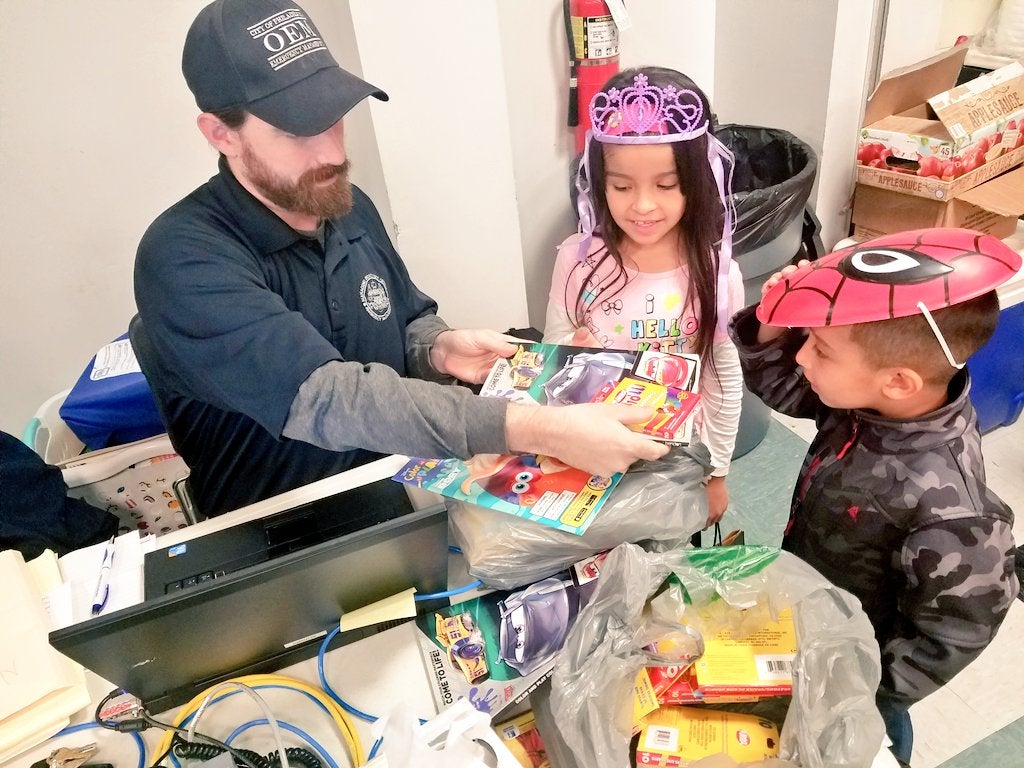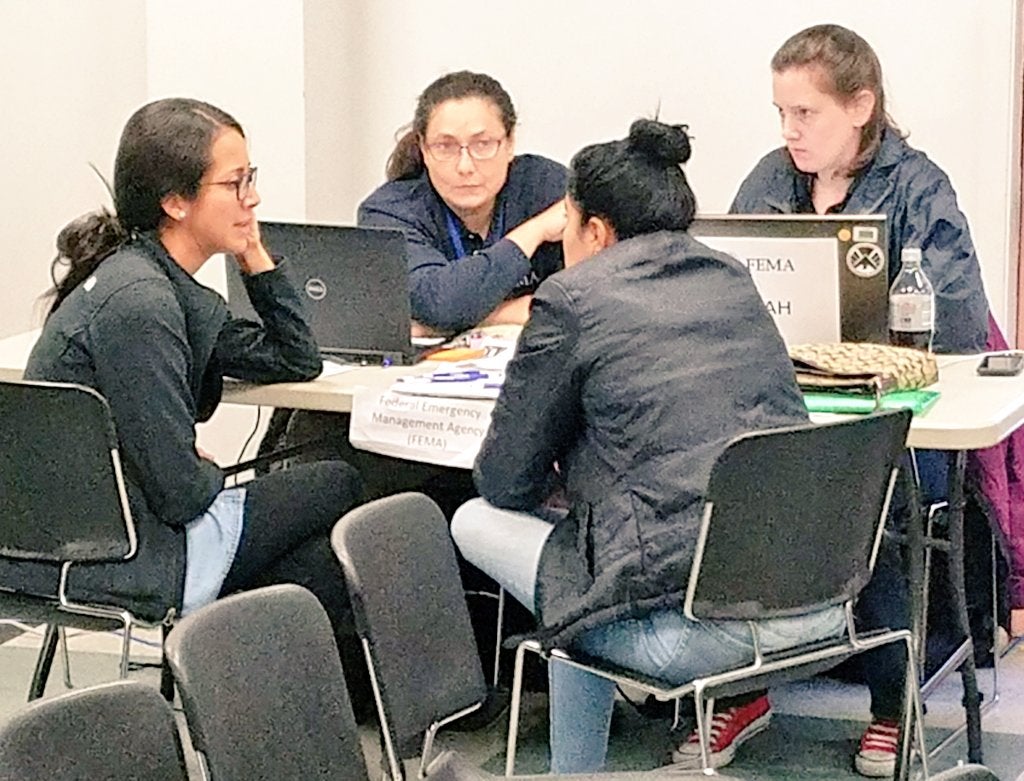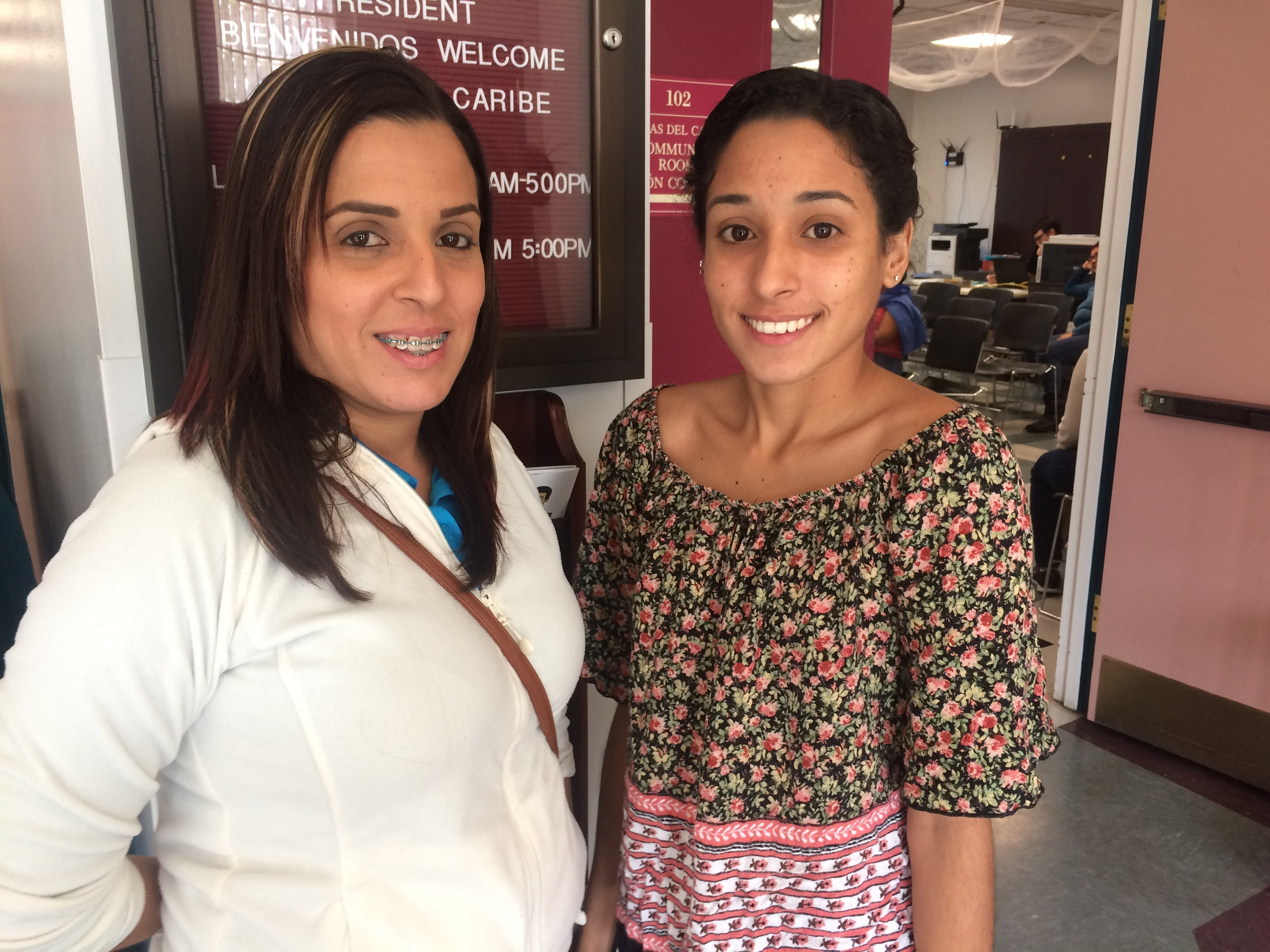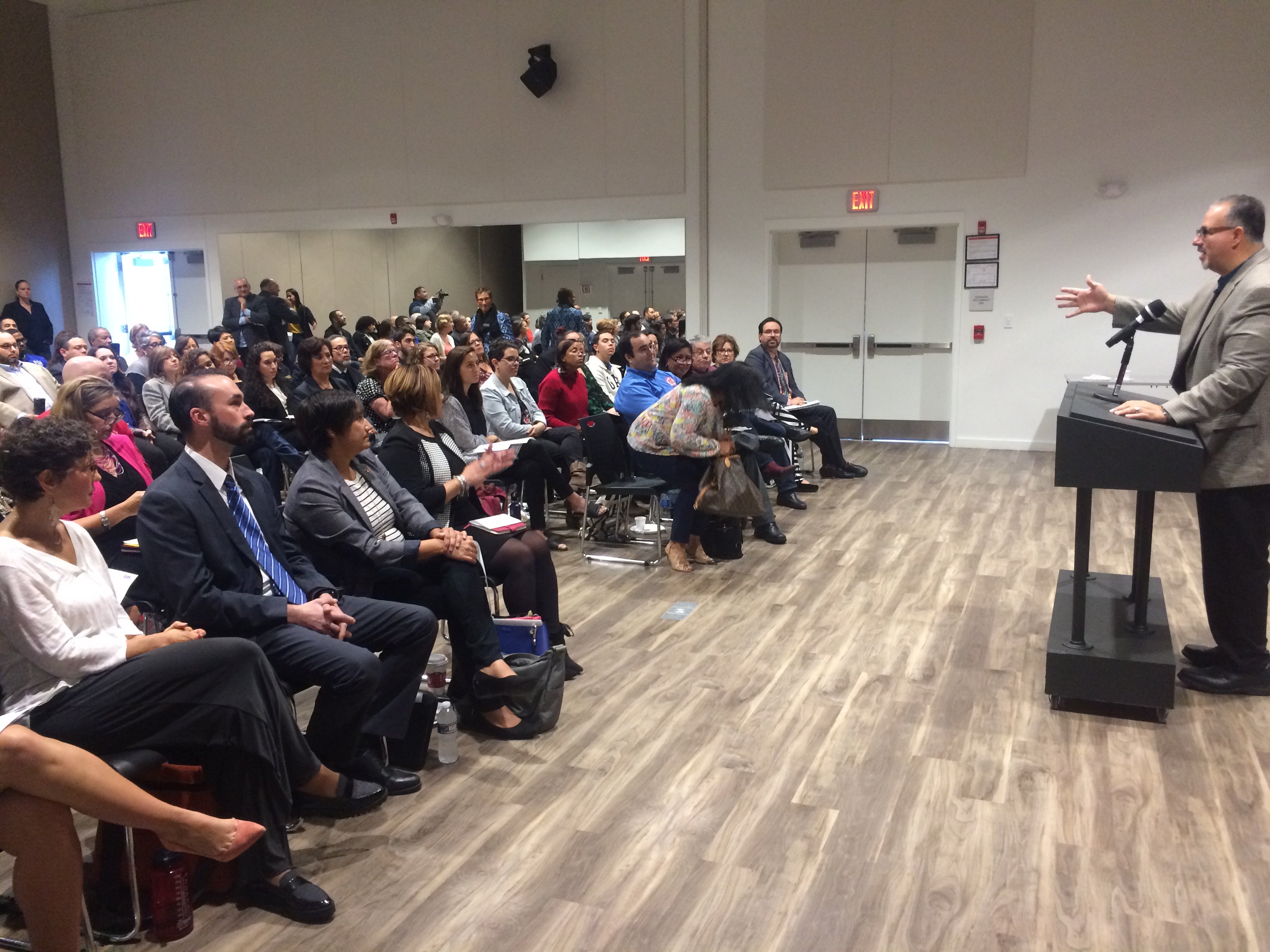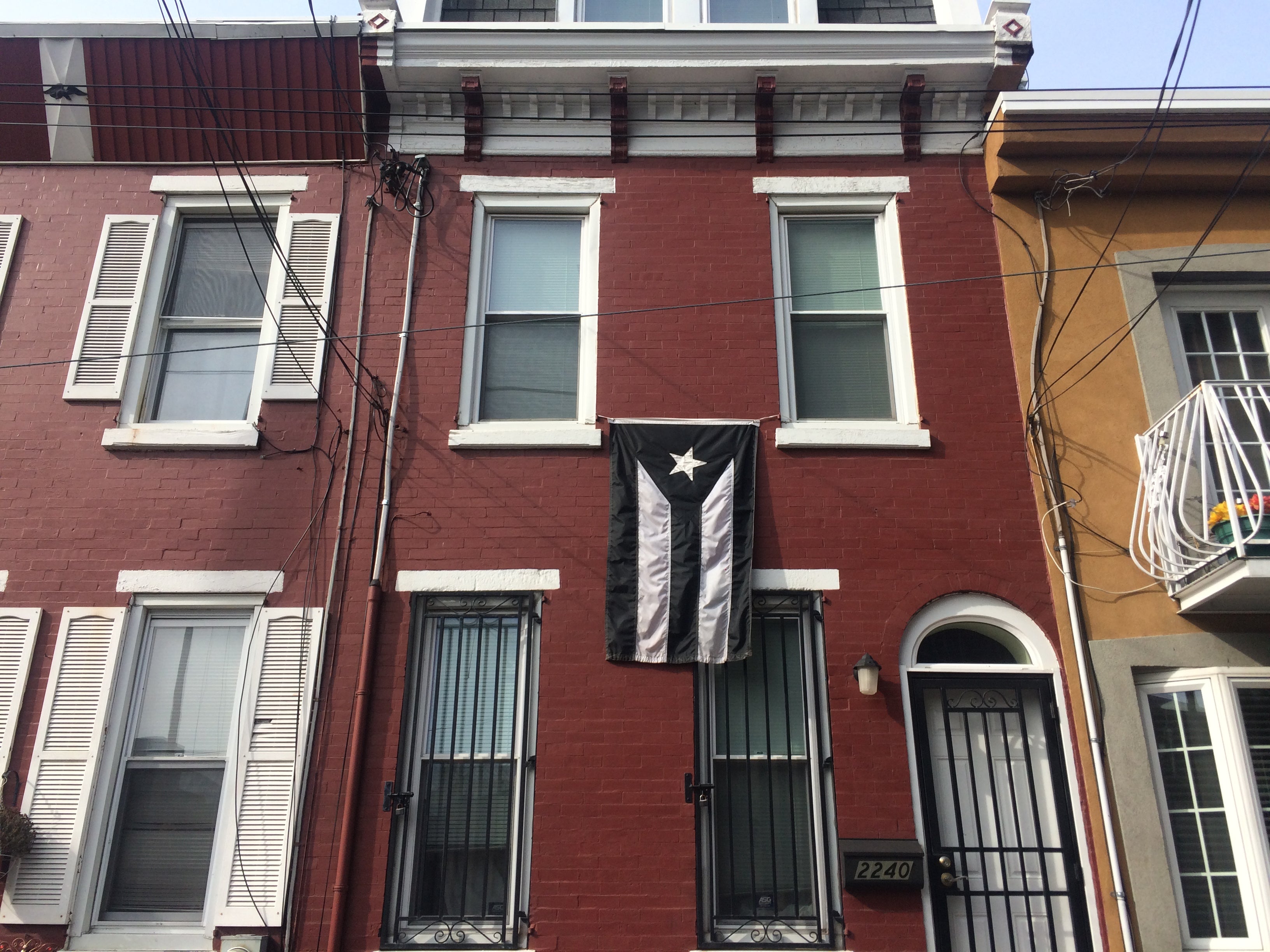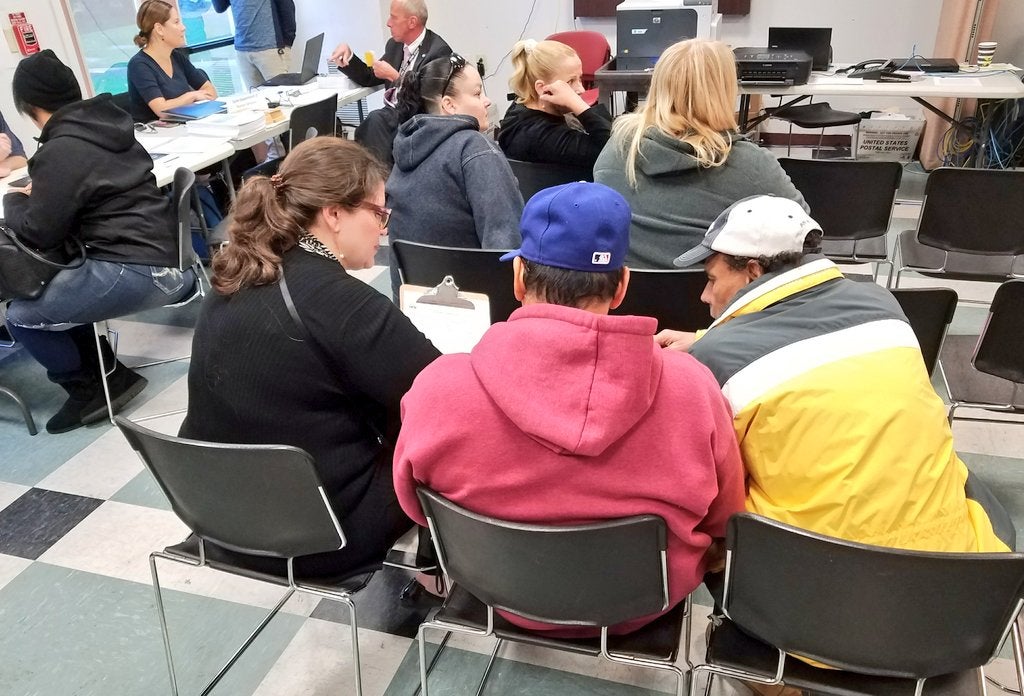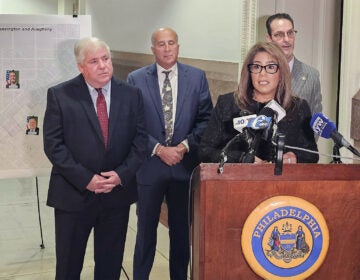With more and more Puerto Ricans fleeing to Philly, but still no federal disaster relief funds, city faces growing challenges
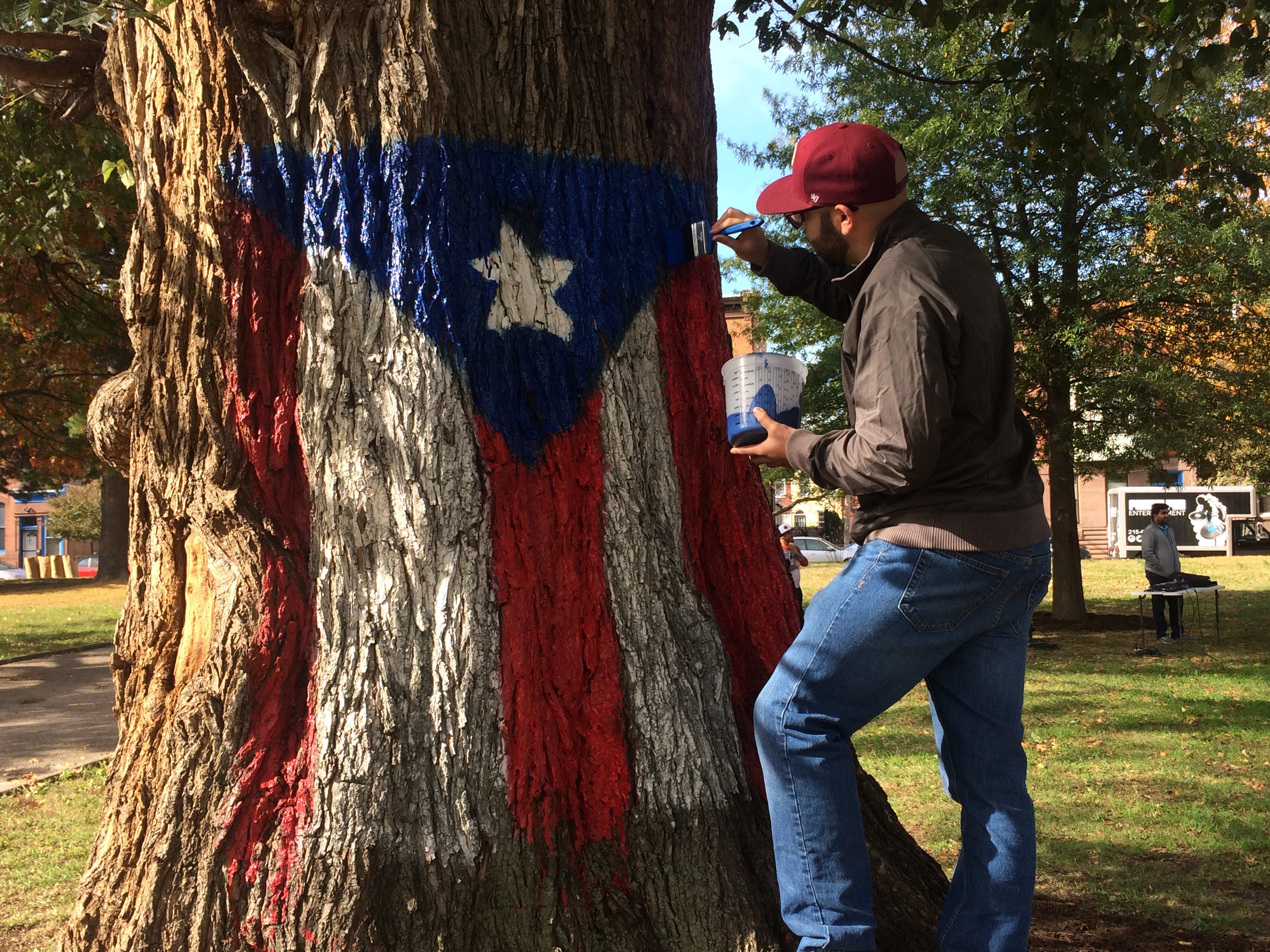
Less than a month ago, Philadelphia’s Office of Emergency Management (OEM) opened a central intake center for to help Puerto Ricans displaced by Hurricane María get all the services they need in one location. Since October 11th, the disaster assistance center located inside the headquarters of the Hispanic Association of Contractors and Enterprises (HACE) on Allegheny Avenue, has received so many — 739 individuals across 361 families — that on Monday, the center is moving to a larger space, inside the Rivera Recreation Center.
The city has opened one center, and then another, and may also open an emergency shelter, as an emergency response to a natural disaster that struck an island 1,500 miles away from Philadelphia. Federal authorities have moved slowly to respond to this, the latest in a string of increasingly frequent, and increasingly violent, storm, a trend attributable in part, scientists now say, by climate change. Even though tropical storms strike Philadelphia with relative rarity, city officials find themselves responding ever more routinely to hurricanes.
“The largest spike that we’ve seen in a [single] day has been 92 new individuals coming to register,” said OEM’s director Dan Bradley. “So, we’ve quickly outgrown our space at HACE.”
Bradley expects many more to come. After Maria, the Center for Puerto Rican Studies at Hunter College published a report estimating that Puerto Rico may lose 14 percent of its population over the next two years. The same report suggests Pennsylvania will see the second largest migration of Puerto Ricans (behind Florida), estimating between 6,500 and 27,000 people moving here annually.
The new assistance center location will offer more space for community organizations and governmental agencies helping displaced Puerto Ricans transition into their new life. A third of the displaced individuals received so far have required at least some medical assistance. Starting this week, the center will also have personnel from the United States Department of Housing and Urban Development (HUD), who will provide housing counseling and use their expertise to find programs for disaster assistance and homeless diversion.
“Until now, this has largely been a community-based and local government solution,” Bradley said.
Bradley said in the past when Philadelphia has welcomed displaced populations — the Lebanese repatriation, Haitian earthquake or Katrina survivors — there’s been always significant federal support. Compared to those events, the federal government has provided relatively little support so far, especially in the form of direct financial assistance.
According to city spokeswoman Lauren Hitt, the city has spent $1,500 per day just on translators since the center opened and they expect costs to “increase exponentially” if they need to open an emergency shelter or provide interim housing. For now, two-thirds of the people coming have been staying with family or friends, but such couchsurfing isn’t a longterm solution. OEM has relied heavily on local nonprofits and businesses for temporary housing, food, health services, clothes, and transportation.
Unidos PA’PR, the organization leading the local aid response to Hurricane Maria, called a meeting last Friday to strategize the next steps.
“What we’re seeing is that the federal response to Puerto Rico is disproportionate to the traditional response in this similar types of natural disasters, from the assistance, the decision making, and the time it’s taking to activate,” said Philadelphia Councilwoman María Quiñones-Sánchez to a room at Taller Puertorriqueño packed with over a hundred community and business leaders, and city and state officials.
At the meeting, Bradley announced a hotel voucher program called Transitional Sheltering Assistance (TSA) had been activated by Puerto Rico’s governor. But the program is only valid for hotels that are registered with FEMA — there are none in Philadelphia — and is temporary, aimed at providing short term housing until displaced Puerto Ricans can return home.
“I know that the governor has a commitment to rebuild Puerto Rico, but I think it’s unrealistic that 60 days is going to be enough time for that rebuild to happen,” Quiñones-Sánchez said.
The timeframe is even shorter than Quiñones-Sánchez said. According to Bradley, it’s just 30 days, not 60, although there are hopes for an extension.
“First and foremost, we need to hear from FEMA about how long TSA will run,” Bradley said. “That’s critical for us because we have to make decisions to take care of this people if this program is not going to run as long as it needs to.”
According to Bradley, FEMA is now working on a larger evacuation from the island to the mainland. It is still uncertain when that will happen or where people will be sent to. To access federal funds, the governor of Puerto Rico would have to ask FEMA to designate Philadelphia as a host city, but the federal agency retains the discretion to approve or deny such a request. So far, neither step has been taken, even though Philadelphia has been a draw, thanks in part to a preexisting concentration of Puerto Ricans living here.
“We’re a little bit further up the eastern coast, but we’ve seen so many folks so far, we’re sort of anticipating that we could potentially be one of those sites,” Bradley said.
Araceli Reyes, a 38-year-old single mother, arrived in Philadelphia with her two daughters on October 17th from the town of Comerío, located in the center-eastern region of Puerto Rico. The storm devastated the island’s already fragile economy, shuttering many businesses that weren’t directly destroyed by the winds and water because regular commerce has all but ended. Food and water became scarce, and electricity still hasn’t been restored to many parts of the island. After Maria, Reyes lost her job, and the girls’ schools have been slow to reopen. And she had a friend in Philly.
“It has been a little hard,” Reyes said in Spanish. “Getting used to the change, doing a lot of errands, and missing Puerto Rico a lot… It was a really hard and sudden blow — from being established to losing it all, and having to venture to another [part of the] country.”
Reyes is not sure if she will stay in Philadelphia or move to a smaller town, but she doesn’t want to go back to Puerto Rico. Her oldest daughter, Nachali Febus, will only remain in Philadelphia if she can continue nursing school here. Febus already misses el calorcito, the warm weather from the island. But she’s feeling more secure.
“[It feels better] being able to buy food without a cap, or gas, or having power and water,” Febus said in Spanish. “There [in Puerto Rico], you asked yourself what I’m going to do today, what I’m going to do tomorrow?”
Her younger sister started attending a local school last Monday.
According to Philadelphia School District spokesperson Lee Whack, at least 63 displaced students from Puerto Rico have enrolled in Philadelphia’s public schools since the hurricane. Federal law allows displaced children living in temporary housing to enroll in local schools even if they are missing the documentation usually required.
For now, Reyes and her daughters have a place to stay with their friend. But they can’t stay there forever.
Elizabeth Hersh, Director of Philadelphia’s Office of Homeless Services said that, without FEMA’s help, the city is “a little bit in limbo” in terms of what they can offer as longer-term housing. Although she said HUD anticipates giving rental assistance for displaced people, that is not yet in place. Two families who had public housing assistance in Puerto Rico were able to use their vouchers here, she said.
Cynthia Figueroa, Philadelphia’s Department of Human Services commissioner, said not having FEMA’s help will put the city in a challenging situation.
“We know that there is a tremendous affordable housing shortage in Philadelphia,” Figueroa said.
The city is preparing two contingency plans: opening a shelter and developing a rapid rehousing program. The latter would help people find places to live, and provide them a security deposit plus first-month rent and some furniture. Among other locations, the city is considering using Saint Hugh’s Convent in North Philadelphia as a shelter.
This an unusual situation, said OEM’s Bradley. For the first time, the city is responding to a disaster that did not happen here, without the typical disaster tools granted by the federal government.
“One of the challenges that all cities face is something called interim housing, which is, what do you do when individuals have been severely impacted by a disaster, they’ve lost their homes, they need that temporary place to stay until they can really begin that recovery process,” Bradley said.
Billy Fleming, a research coordinator focused on climate change at the Ian L. McHarg Center at PennDesign, said cities should be spending more time preparing, from an urban design perspective, to help the inevitable influxes of displaced populations resettle.
“Large-scale human migration is going to be one of the effects of climate change, with or without a huge disaster like Maria,” Fleming said. “One of the big challenges that climate change poses is that its effects are diffuse, they’re very widespread, they’re slow to emerge and hard to detect until you reach the moment of crisis.”
Cities need to build enough housing supply to absorb the need for interim housing that comes with displacement, Fleming said. The only way to do that, he added, is by making it cheaper to build more housing.
“You can imagine doing things like upzoning in neighborhoods where density is fairly low and where housing pressure is going to push prices up anyway,” said Fleming, who previously worked on fair housing policy in President Barack Obama’s Domestic Policy Council. “So, when there is an influx of people in Philadelphia, a neighborhood that has two- and three-story row houses could upzone to allow four- or five-story homes or condos, and would allow people to move in and ease the pressure on housing prices across the neighborhood”.
WHYY is your source for fact-based, in-depth journalism and information. As a nonprofit organization, we rely on financial support from readers like you. Please give today.



